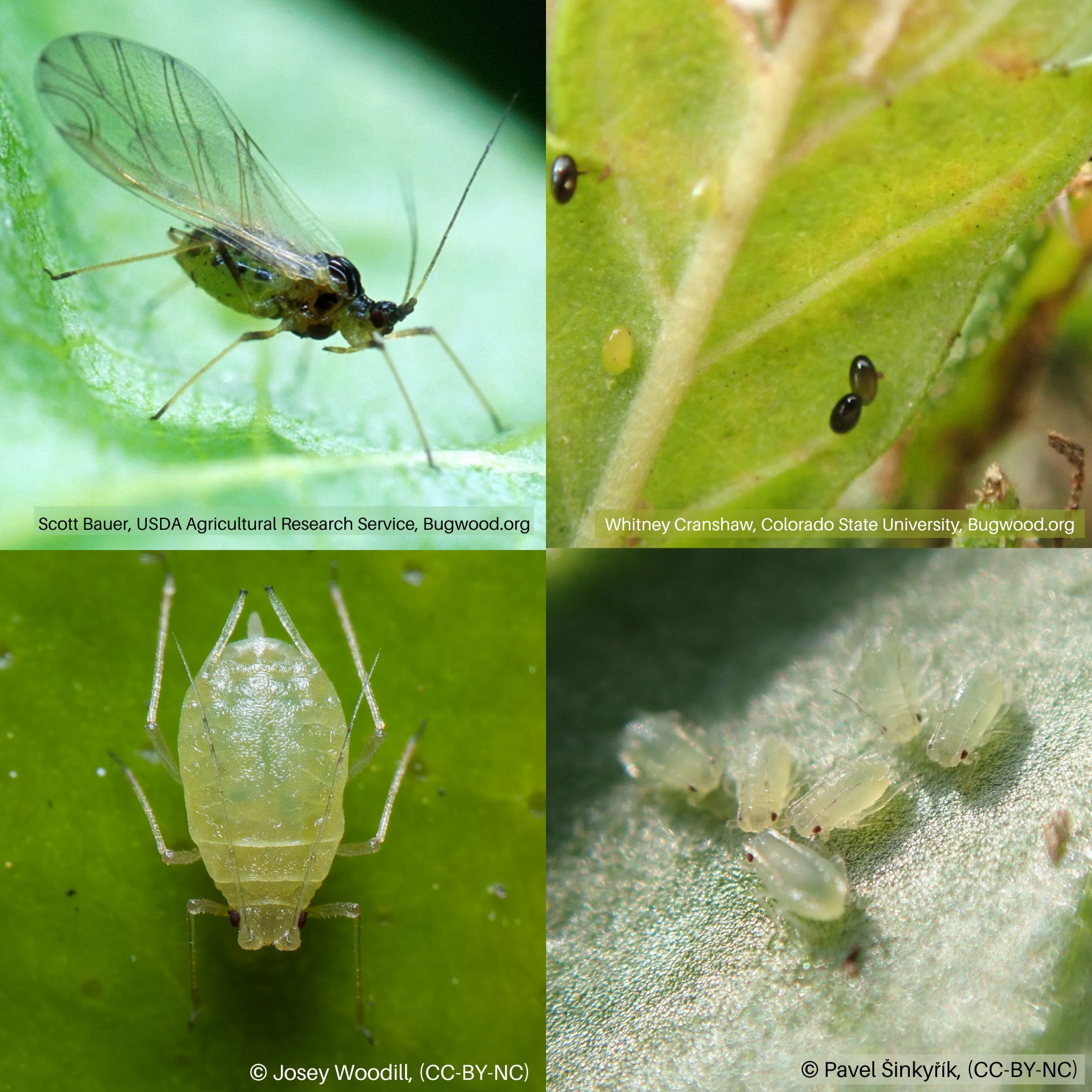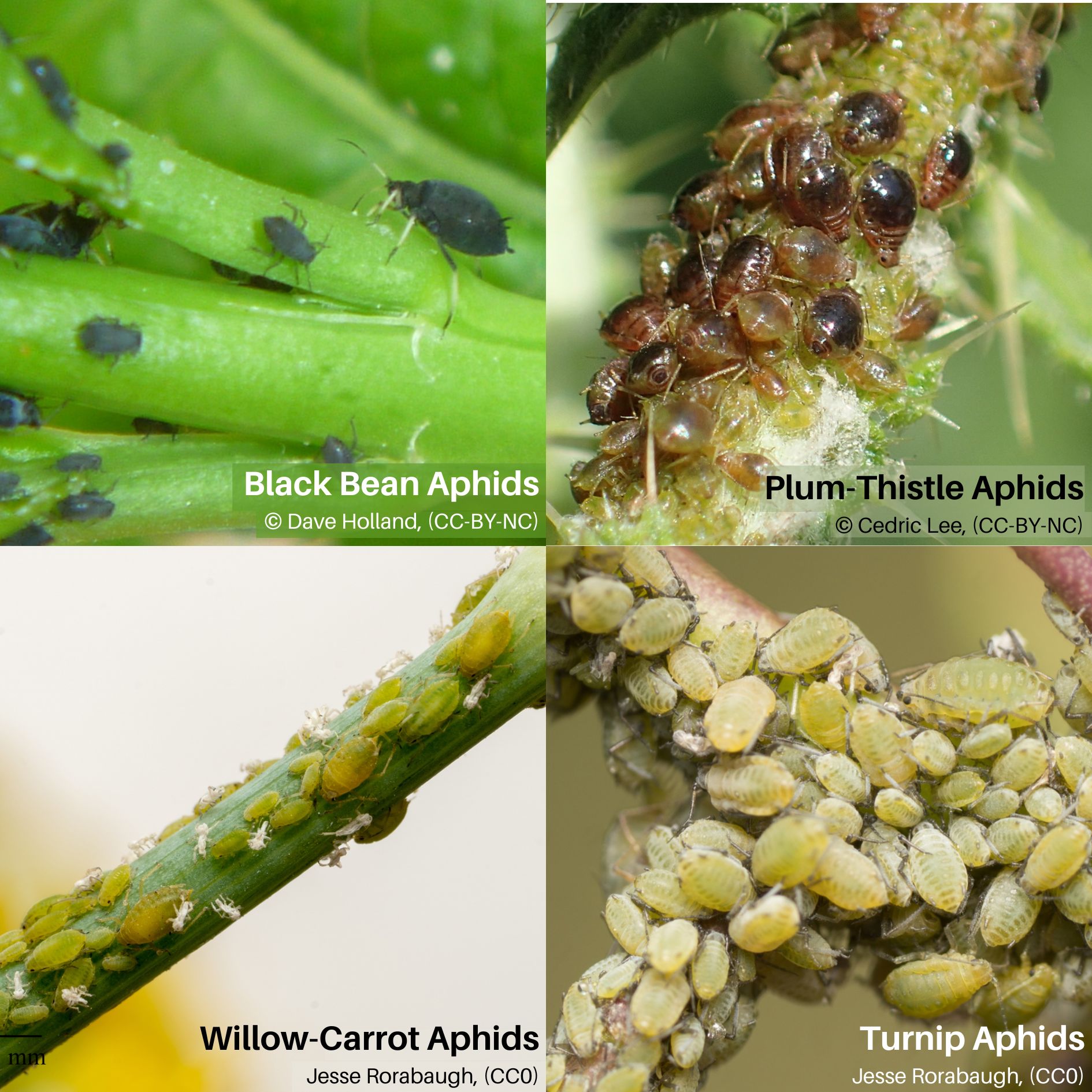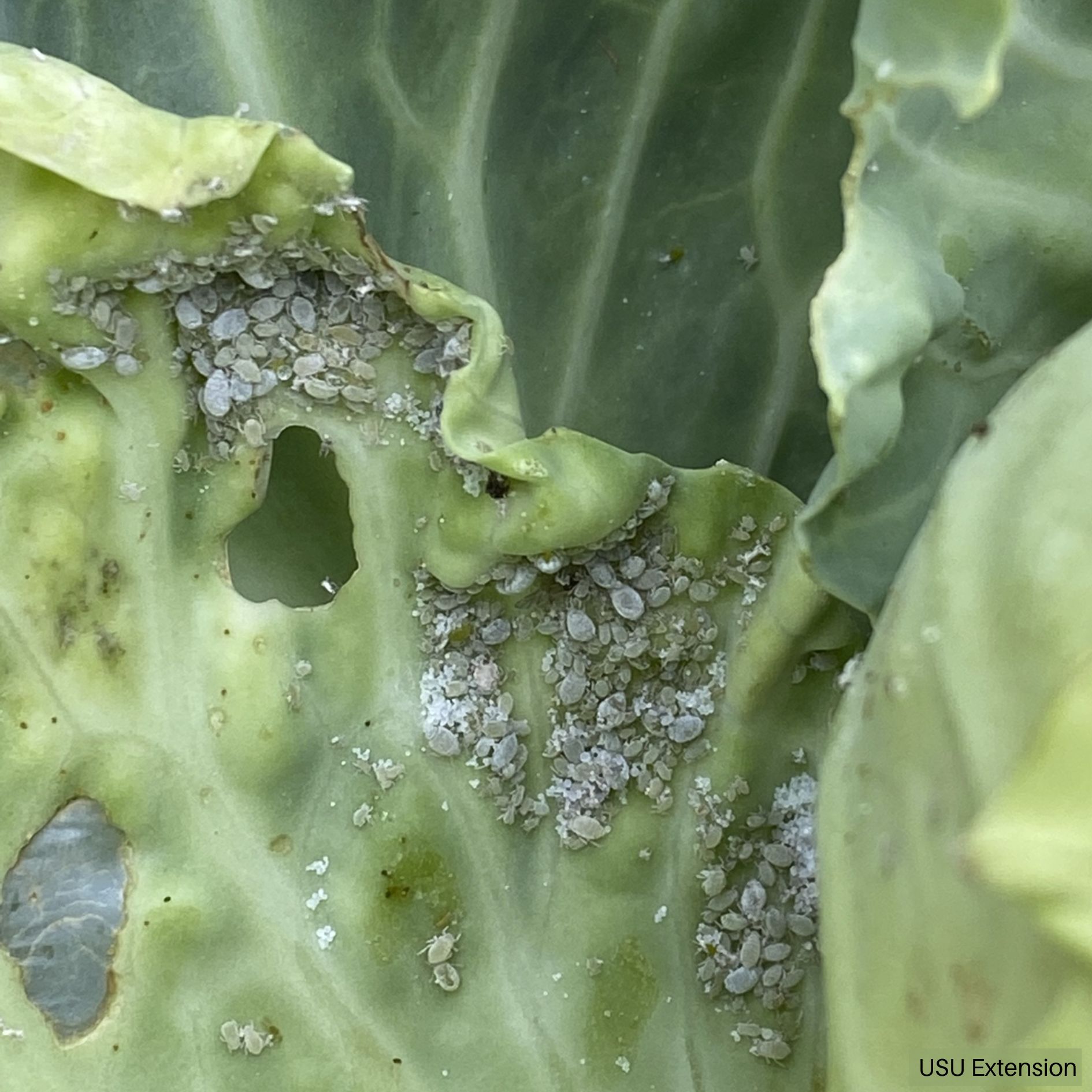Aphids on Vegetables
 Green Peach Aphid Life Stages
Green Peach Aphid Life Stages Aphid Species in Utah
Aphid Species in Utah Cabbage Aphid Infestation on Lettuce
Cabbage Aphid Infestation on Lettuce Corn Leaf Aphid Infestation
Corn Leaf Aphid InfestationHOSTS
- Asparagus
- Brassicas
- Legumes
- Corn
- Solanaceaes
- Leafy Greens
- Cucurbits
- Potato
- Root Crops
OVERVIEW
Aphids are small, soft-bodied insects that suck sap from plant tissues. Aphid feeding distorts and stunts plants, produces honeydew that supports sooty mold fungi, and can vector plant viruses. During spring and summer, aphids can be abundant.
Common aphids that affect vegetables found in Utah, include the following:
- Black Bean Aphid (Aphis fabae)
- Cabbage Aphid (Brevicoryne brassicae)
- Corn Leaf Aphid (Rhopalosiphum maidis)
- Honeysuckle Aphid (Hyadaphis foeniculi)
- Currant-Lettuce Aphid (Nasonovia ribisnigri)
- Lettuce Root Aphid (Pemphigus bursarius)
- Green Peach Aphid (Myzus persicae)
- Melon-Cotton Aphid (Aphis gossypii)
- Pea Aphid (Acyrthosiphon pisum)
- Plum-Thistle Aphid (Brachycaudus cardui)
- Potato Aphid (Macrosiphum euphorbiae)
- Turnip Aphid (Lipaphis erysimi)
- Willow-Carrot Aphid (Cavariella aegopodii)
DESCRIPTION
Adults may be winged or wingless with a pear-shaped, soft body. Adults and nymphs vary in color from pale to dark-green, pink, red, bluish-green, black, yellow, and gray, and may have a waxy covering (e.g. cabbage aphid).
BIOLOGY
Egg | Nymph (4 stages) | Adult (wingless or winged)
Aphids are a concern from mid-April through the end of the growing season.
- Aphids reproduce asexually during the growing season, but reproduce sexually when temperatures cool.
- Multiple generations per growing season.
- Overwinter as eggs on woody hosts or crop debris.
SYMPTOMS
Aphids feed on buds, leaves, flowers, stems, and fruits with piercing-sucking mouthparts. Feeding causes plant structures to become stunted, yellowed, and distorted. Aphid feeding results in an overall loss of plant vigor. Early in the season, young vegetable plants can suffer loss of productivity and reduced plant health. Cabbage aphids can cause significant economic losses due to contamination of produce. In broccoli, they feed within the flower stalks, and in Brussels sprouts, they feed within the developing heads.
Aphids excrete a sugary substance called honeydew which can cover plant surfaces and harm crop quality and marketability. Sooty mold fungi may grow on the honeydew, blocking sunlight and reducing plant vigor. Honeydew attracts ants, which can protect aphids by warding off predators to protect their honeydew food source.
SCOUTING
- Adults first seen late May and June.
- Adults and nymphs often found in clusters on leaves or stems, but may be found singly.
- Eggs laid in fall or winter on woody host plants, crop residue, or weeds.
- Watch for rapidly increasing populations and feeding damage in the late spring through early fall.
GENERAL MANAGEMENT
Aphids are common but typically do not cause severe economic damage unless they vector a virus or are present in high populations.
- Thoroughly scout crops and weeds for signs or symptoms of aphids.
- Inspect transplants for aphids before planting.
- Before planting, remove weeds and volunteer crops that can serve as aphid hosts.
- Use yellow sticky traps to monitor aphid populations.
- Encourage natural enemies such as lady beetles, damsel bugs, syrphid flies, predatory midges, lacewings, and parasitic wasps.
- Manage nitrogen levels. High levels of nitrogen fertilizers can encourage aphid reproduction.
- Row covers put in place at planting through start of bloom can exclude aphid populations.
- Reflective mulches can interfere with the ability of winged aphids to find plants.
INSECTICIDES
- Only use insecticide applications when needed. Rotate among different insecticide classes between applications as aphids are prone to developing resistance.
- Organically approved insecticides include insecticidal soap and oils (petroleum, mineral, canola, clove, garlic, rosemary, and neem). Oil and soap sprays kill aphids on contact by physical means (suffocation and disruption of waxes in the exterior cuticle), so thorough coverage is essential for good efficacy.

